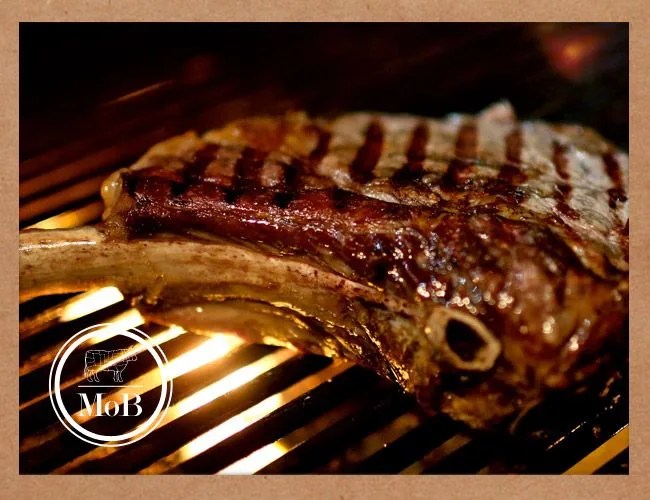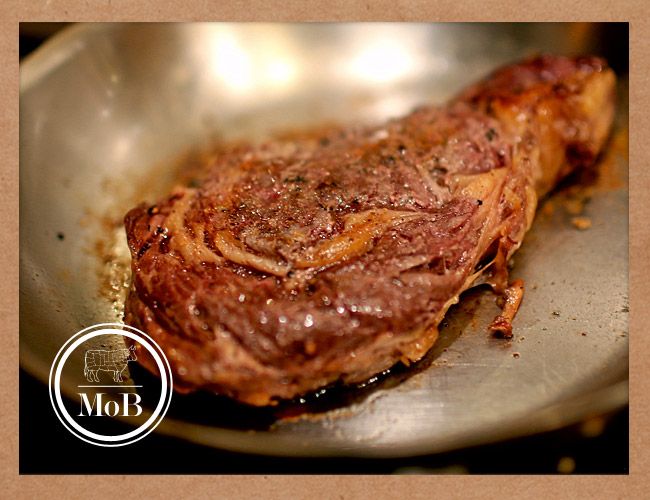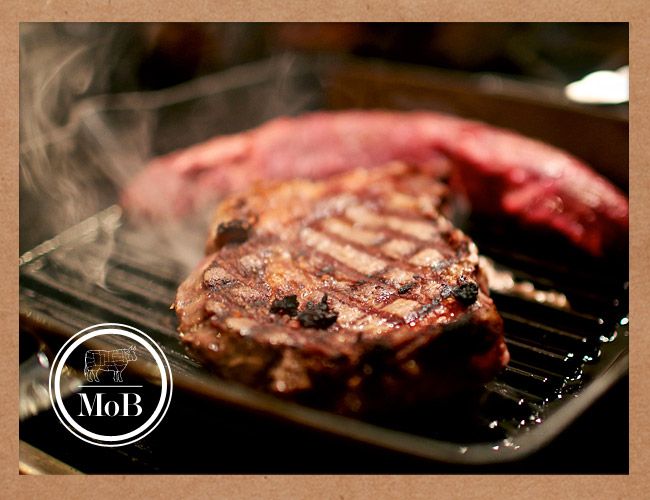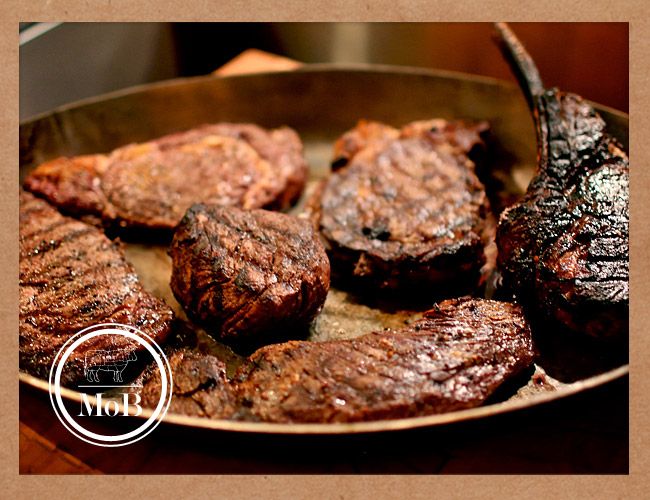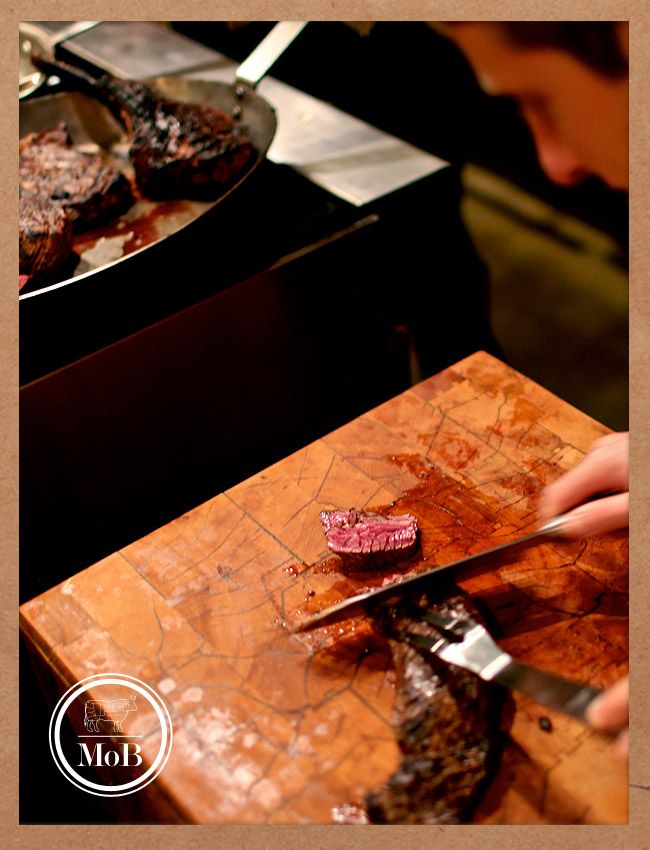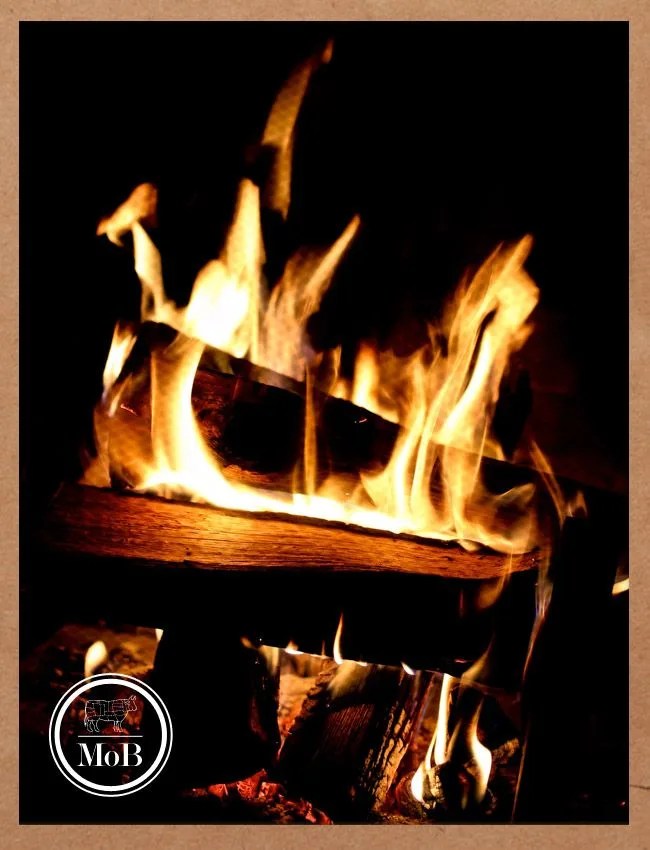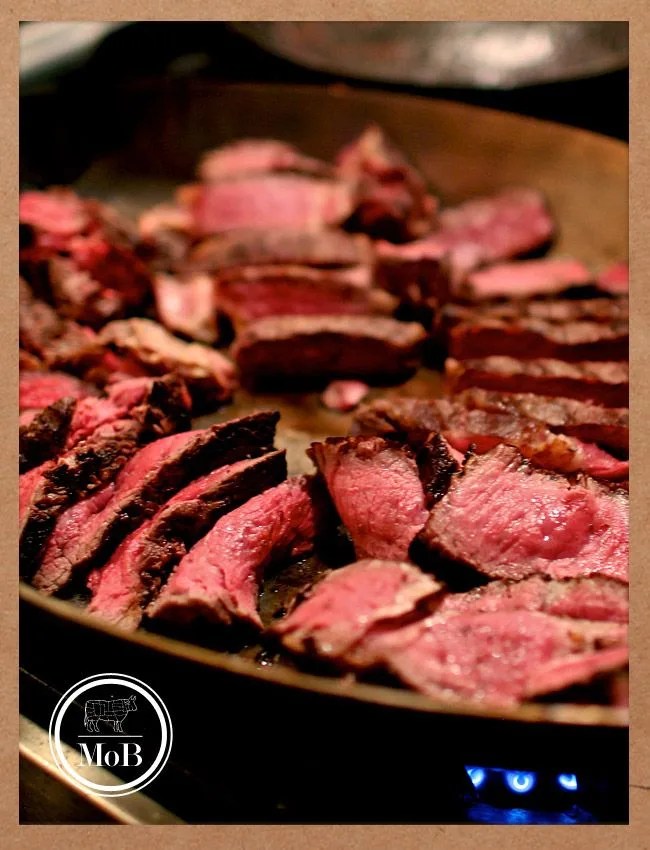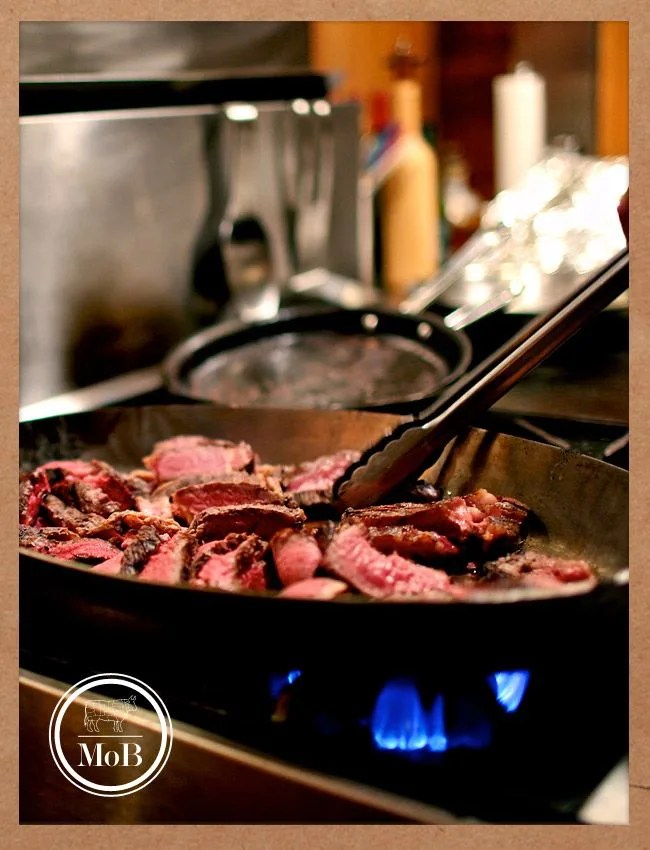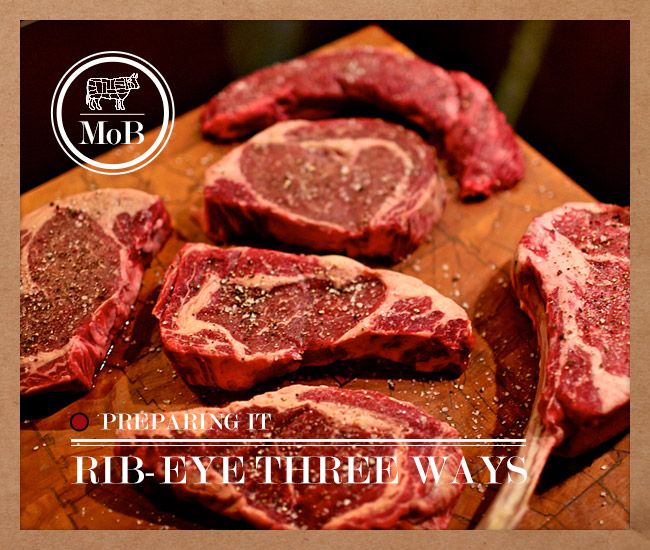 Eric Yang
Eric YangThere’s more than one way to skin a cat, the saying goes. The same is true for cooking a steak. Most of the time the way we cook at home is dictated by circumstance: grill when the weather permits; pan fry if it doesn’t (or if we live in an apartment); broil, uh, when the oven’s looking appealing; and cook sous-vide during wet dreams.
The cooking medium plays an important role in the end product: the texture, the way it tastes and the ease with which it arrives at the desired done-ness. So while weather and your kitchen gear may often dictate your dinner plans, it’s a good idea to know your cooking options — remember, you are the master of your own beefy destiny.
With the GP crew assembled and hungry, we cooked three ribeyes available from Heritage Foods USA — two Wagyu steaks (Akaushi-Angus cross) and one from a White Oak Pastures grass-fed Angus cow — to see how three different methods stacked up.
A Month of Beef three-way, after the jump.

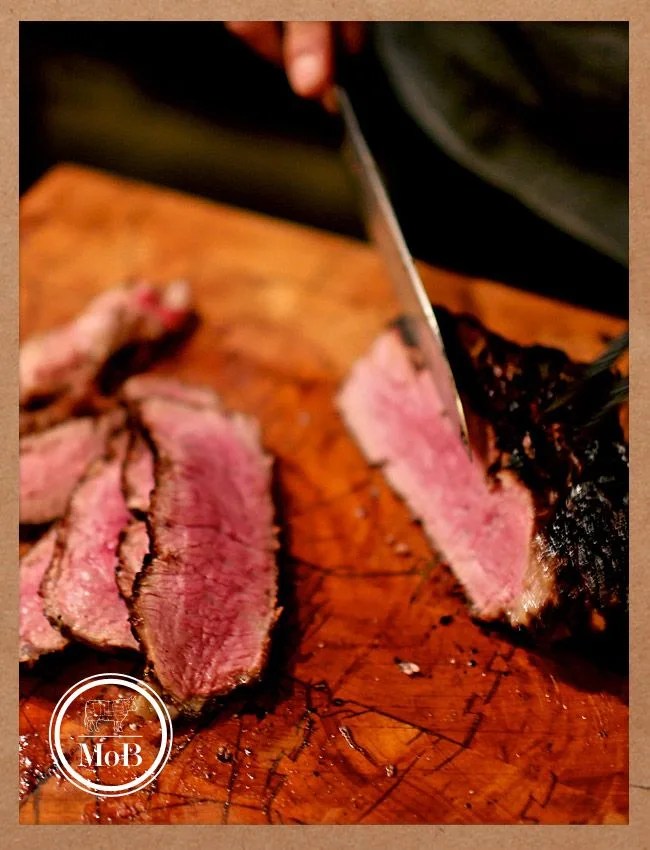
Rib-eye is a well-marbled steak, cut from the center of the rib roast that sits on top of the rib primal. With Wagyu the marbling is even more pronounced. Because it has such great fat content, our goal was to cook it to medium-rare, further along the done-ness scale than we might cook a super lean strip steak or tenderloin. The idea is to melt down the fat, which won’t happen if the steak is still cool in the middle.
Beef science lesson of the day: fat is also less conductive than muscle fibers. This means that the steak will cook marginally slower than a very lean cut and give us a little more room for error. However, the internal temperature of any steak moves quickly over fire, so in all cases we’d prefer to undercook and return to heat if needed (a wise lesson), rather than overcooking and returning to the table with piece of meat resembling charcoal.

